#bonar colleano
Explore tagged Tumblr posts
Text





Sleeping Car to Trieste (1948) John Paddy Carstairs
October 19th 2024
#sleeping car to trieste#1948#john paddy carstairs#jean kent#albert lieven#alan wheatley#david tomlinson#paul dupuis#derrick de marney#rona anderson#bonar colleano#finlay currie#michael ward#hugh burden
2 notes
·
View notes
Text

David Niven and Marius Goring in A Matter of Life and Death (Michael Powell and Emeric Pressburger, 1946)
Cast: David Niven, Kim Hunter, Robert Coote, Kathleen Byron, Richard Attenborough, Bonar Colleano, Joan Maude, Marius Goring, Roger Livesey, Raymond Massey. Screenplay: Michael Powell, Emeric Pressburger. Cinematography: Jack Cardiff. Production design: Alfred Junge. Film editing: Reginald Mills. Music: Allan Gray.
Fantasy, especially in British hands, can easily go twee, and though Michael Powell and Emeric Pressburger had surer hands than most, A Matter of Life and Death (released in the United States as Stairway to Heaven, long before Led Zeppelin) still manages occasionally to tip over toward whimsy. There is, for example, the symbolism-freighted naked boy playing a flute while herding goats, the doctor's rooftop camera obscura from which he spies on the villagers, and the production of A Midsummer Night's Dream being rehearsed by recovering British airmen. And there's Marius Goring's simpering Frenchman, carrying on as no French aristocrat, even one guillotined during the Reign of Terror, ever did. Many find this hodgepodge delicious, and A Matter of Life and Death is still one of the most beloved of British movies, at least in Britain. I happen to be among those who find it a bit too much, but I can readily appreciate many things about it, including Jack Cardiff's Technicolor cinematography (Earth is color, Heaven black and white, a clever switch on the Kansas/Oz twist in the 1939 The Wizard of Oz) and Alfred Junge's production design. On the whole, it seems to me too heavily freighted with message -- Love Conquers Even Death -- to be successful, but it must have been a soothing message to a world recovering from a war.
12 notes
·
View notes
Text
The Crazy Love of Burt Pugach and Linda Riss
This is a show biz blog and Burt Pugach (1927-2020) had a modest footprint in show business. He was invested in New York nightclubs, and he produced the crime drama Death Over My Shoulder (1958) with Keefe Braselle, Bonar Colleano, and Jill Adams. But history will always remember him for something else, a memory amplified by the 2007 documentary Crazy Love, co-directed by Dan Klores and Fisher…
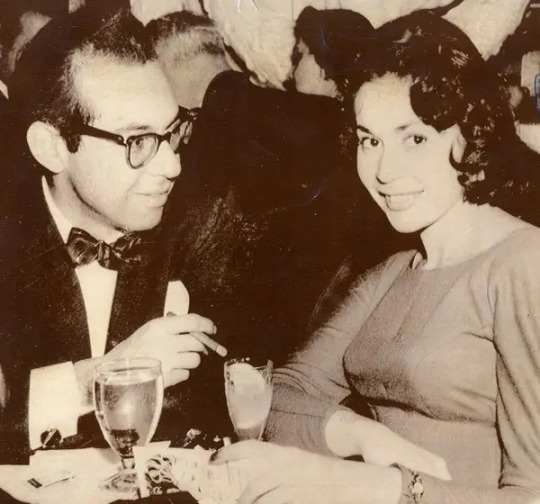
View On WordPress
1 note
·
View note
Photo
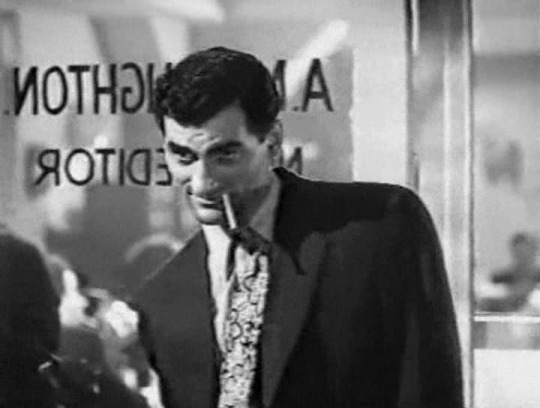

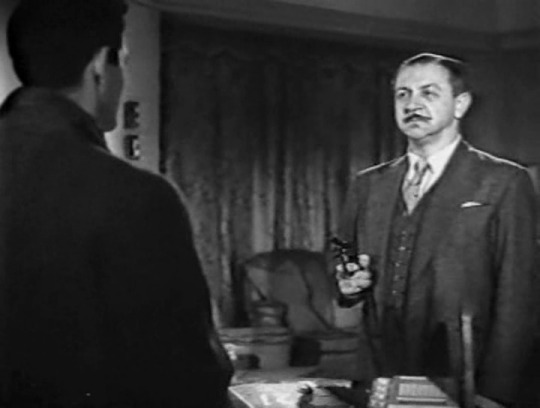

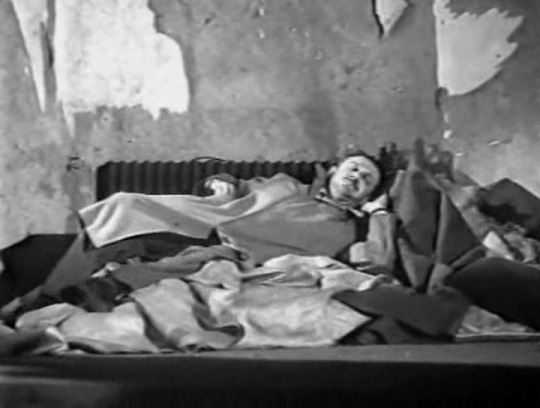

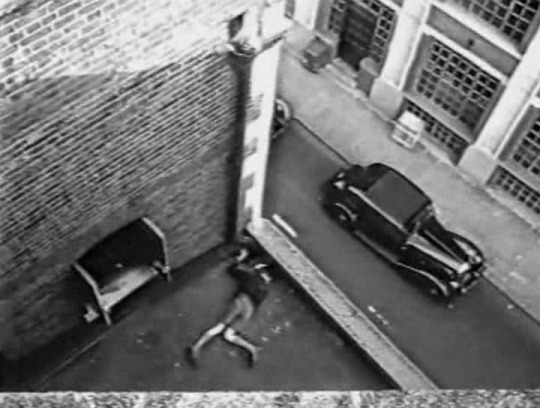
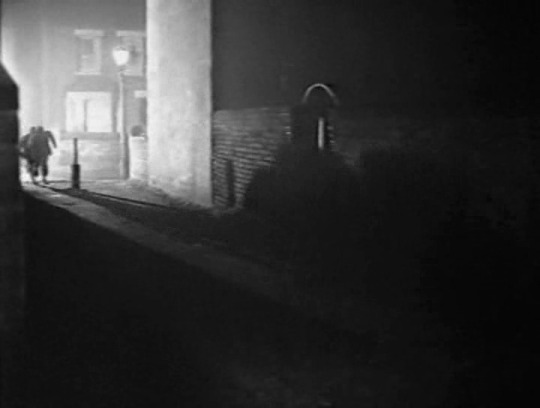
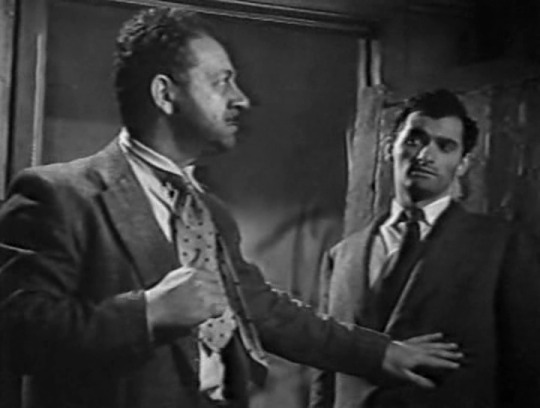

escape by night (uk, gilling 53)
13 notes
·
View notes
Text








The Sea Shall Not Have Them (1954)
Director-Lewis Gilbert
Starring-Dirk Bogarde, Michael Redgrave, Bonar Colleano, Jack Watling, Anthony Steel, Nigel Patrick, James Kenney, Sydney Tafler, Victor Maddern
Photo Set 1 of 2
#dirk bogarde#the sea shall not have them#1954#lewis gilbert#michael redgrave#bonar colleano#jack watling#can we mention the relationship between mackay and harding?#mackay (bogarde) gives harding his shoes leaving him with cold wet feet in the dinghy#he gives him his jacket to keep him warm#he falls asleep on his shoulder#and once out the war harding says he'll get his fruit and veg from mackays shop#even if it means travelling from gloucestershire#the shops in luton!...#look at the last two pics. he didnt give waltby or kirby his jacket!
15 notes
·
View notes
Text
lockdown film no. 38 - A Matter of Life and Death (1946) dir. Michael Powell and Emeric Pressburger
27/05/2020
I feel like my dad has generally good taste in films about men, so when he suggested this for a watch on a Wednesday evening, I agreed quite happily. It helped that I’d seen it listed in hundreds of lists, and the image of David Niven and Kim Hunter was so iconic that I couldn’t very well refuse
- in general I liked this film. It’s almost comedically british, and I find the idea of a relationship between Niven and Hunter completely absurd, but is so often the way in old films where there’s a relationship just cos. Having said that, I understand that if you were about to die and you were talking to a person who expressed that they cared about you, you’d probably be inclined to say that you love them. I have a feeling
- something I absolutely love about this films portrayal of heaven is that it’s entirely secular. It’s not a christian representation, and looks more like a hotel in the sky than heaven, or what we imagine heaven to be. I like the idea that heaven is all admin, and that instead of angels you have clerks.
- I love the shot of Peter walking along the beach away from the sea, discarding his uniform and walking up towards the dunes. Beautiful
- why is the little boy naked? Why is he playing the flute
- WHY ARE THEY CALLING EACH OTHER DARLING AND KISSING ON THE BEACH? Y’ALL JUST MET
- ‘sacre brouillard’
- I love the French guy? Concierge? He lost his head! O-ho!
- “I love her” Again — y’all just met!
- felt like I was gonna get whiplash watching them play ping pong
- this would be absolutely stunning as a play. All the sets, the staging, they could do so much with the sound and the more surreal sequences — I’d love to see it.
- THE STAIRS. They would be difficult to do on stage maybe but it’d probably be doable!
- the shot of his eye closing… but from the point of view of being inside his eye??? That made me feel so ill. it’s really clever and actually probably fairly easily done? I’m seeing some weirdly coloured fabric and massive model eyelashes
- very interesting bit where Peter kisses Kim even though she’s frozen. Conductor 71 says “she won’t feel it!” And Peter says “it doesnt matter”. Conductor 71 responds, to himself, it seems, with “oh, he is English. What is the good of kissing a girl if she does not feel it?” Very astute.
- something I really enjoy about this film is the astonishing diversity they show. There were some (not many) propaganda posters in the second world war of soldiers from different countries in their different uniforms, but that diversity isn’t shown a lot in films.
- “when in the course of human events our men and women came to your country as your allies it was not to become your prisoners.” “sir, may I bring you up to date, we are living in the twentieth century, not the eighteenth.” “may I bring you up to date, sir, we are not alive at all.
- the fact that he asks for a jury of American citizens and people (i mean, men) from all different cultural and national backgrounds appear makes me happy. Apart from the incredibly conspicuous absence of women
#a matter of life and death#michael powell#emeric pressburger#david niven#kim hunter#roger livesey#kathleen byron#richard attenborough#bonar colleano#joan maude#marius goring#robert coote#robert atkins#bob roberts#edwin max#betty potter#raymond massey#abraham sofaer#robert rietty#john longden#allan gray#jack cardiff#reginald mills#eagle-lion films#stairway to heaven#squadron leader peter david carter#british cinema#second world war#lockdown films#lockdown film no. 38
5 notes
·
View notes
Text










Time Is My Enemy (1954)
"I never knew that anyone could be so low!"
"You should have learnt that during our delirious year together, my dear."
#time is my enemy#1954#second chance#ella adkins#british cinema#films i done watched#crime film#second feature#b movie#don chaffey#dennis price#duncan lamont#patrick barr#renée asherson#susan shaw#william franklyn#mavis villiers#bonar colleano#alfie bass#brenda hogan#agnes lauchlan#dandy nichols#a cheap and cheerful little thriller. well not so much cheerful. much of it is actually pretty glum#but it all ends happily if a little preposterously. there's a brilliant twist in the last act that i kicked myself for not seeing#the casting is interesting. i taped this for the cast and had assumed franklyn would be the lead policeman#or perhaps the new husband and barr the policeman. with lamont as the villain of course. instead barr is the new husband#(supposed to be 'nearly 40'!!!) with lamont as the policeman and franklyn in a minor supporting role. so some playing against type#im not sure i've ever seen lamont play a good guy but actually he's a very likeable hero. asherson is very good but has an awful time#poor thing. brief walkons by dandy nichols and alfie bass both of whom play for laughs and get them#good stuff. not earth shattering but sometimes simple is nice you know?
1 note
·
View note
Photo

American actor, Bonar Colleano who died in a car crash on 17 August 1958. He was 34 years old.
1 note
·
View note
Text
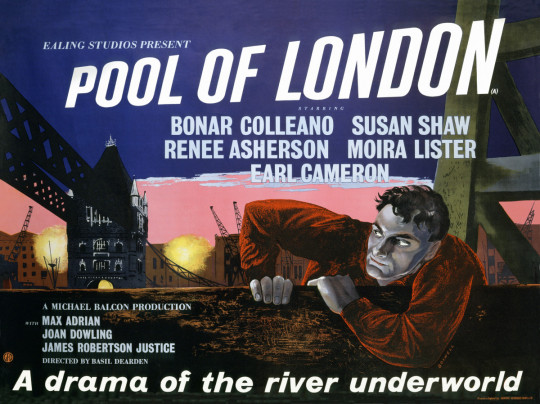
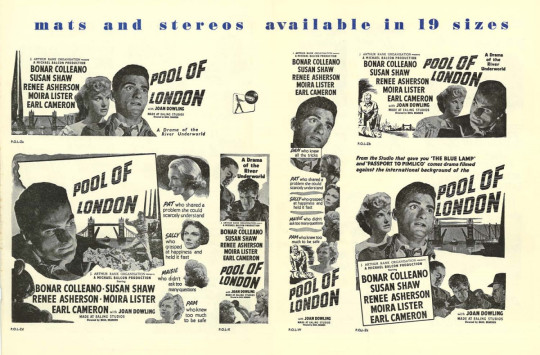






Pool of London (1951) Basil Dearden
February 17th 2024
#pool of london#1951#basil dearden#bonar colleano#earl cameron#susan shaw#Renée Asherson#max adrian#moira lister#james robertson justice#leslie phillips#ealing
5 notes
·
View notes
Photo


South Park Paper Prop: Mr. Garrison's "In the Valley of Penises" Book
Support me on Patreon!
https://www.patreon.com/papermaid
It’s DONE!!!! This will be my flagship paper prop. Could not be more proud. If I can pin it to the top of my tumblr I will. The font, the center photo from the original, everything is PERFECT. Please share!
The image used in the book cover was from the play "A Streetcar Named Desire," 1949: https://www.gettyimages.com/detail/news-photo/bonar-colleano-and-vivien-leigh-in-a-scene-from-tennessee-news-photo/3094340
I will post the video tutorial shorty.
Printing Instructions:
Color print, leave wide margins to wrap around a book and glue in place. Take the print to a dollar store and match what you have to a similar sized book (remember to account for the spine thickness!) More info:
https://papermaid.tumblr.com/post/178583312734/printing-instructions
10 notes
·
View notes
Link
1 note
·
View note
Photo








the man inside (uk, gilling 58)
16 notes
·
View notes
Photo

Pool of London | Basil Dearden | 1951
Renée Asherson, Bonar Colleano
22 notes
·
View notes
Text








Some of the main cast of The Sea Shall Not Have Them (1954)
1-Dirk Bogarde; 2-Michael Redgrave; 3-Bonar Colleano; 4-Jack Watling; 5-Nigel Patrick; 6-Anthony Steel; 7-James Kenney; 8-Sydney Tafler
#dirk bogarde#the sea shall not have them#1954#michael redgrave#bonar colleano#jack watling#nigel patrick#anthony steel#james kenney#sydney tafler
13 notes
·
View notes

